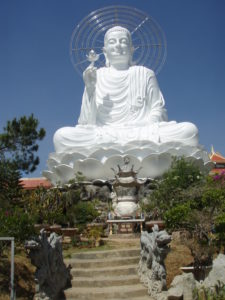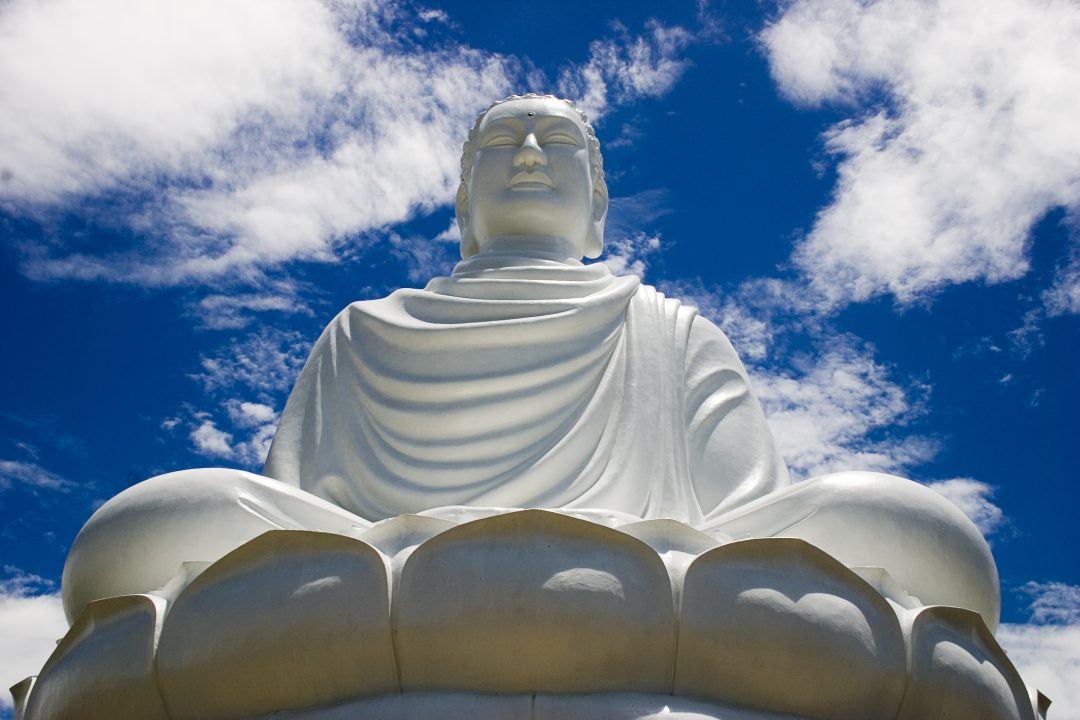Buddhism has a long history in Asia; it originated in India through the teachings of Prince Siddhartha Guatama who rejected courtly life in order to find nirvana. His teachings grew in popularity and spread to Tibet, China, Korea, Japan and the rest of Southeast Asia.
In Vietnam, as well as the rest of Southeast Asia, there were various different sects of Buddhism including Zen, Pure Land Buddhism, Mahayana and Tantra.
Buddhism in Vietnam
As Buddhism traveled to Vietnam, scholars were set about translating the different sutras (religious texts). “In the Far East into written Chinese, the language of literary culture throughout the area. Stories from the sutras were also transmitted orally, and their colorful and memorable scenes penetrated the non-literate folk culture.
 Sutras were often chanted aloud from the texts or memorized and recited. Moreover, the physical texts of the sutras were venerated as holy objects, and copying the sutras was considered a meritorious act of piety”.
Sutras were often chanted aloud from the texts or memorized and recited. Moreover, the physical texts of the sutras were venerated as holy objects, and copying the sutras was considered a meritorious act of piety”.
Unlike other Asian countries, Zen students were very familiar with the sutras. “Zen began as a movement that emphasized direct realization of the truth of the Buddhas and criticized the tendency of many Buddhists to study the scriptures at a superficial verbal level without trying to live up to their message. But Zen teachers certainly never rejected the sutras them-selves: their quarrel was with those who ignored the sutras’ practical intent”.
Medieval Vietnam,
During medieval Vietnam, Zen teachers, like in other Asian countries, were reemphasizing the integral links between Zen and scriptural Buddhism, declaring that anyone who sees any opposition between the two forms misunderstands both.
Strict discipline was essential for both Buddhist nuns and monks during the medieval period; this code was called Vinaya. We can see this through the biographies of certain Buddhist monks, such as Dao Hue.
There were monks who lived away from society, preferring to contemplate and meditate in solitude. However, some, like Trl Bao, would re-enter society and devote themselves to doing good works, “such as repairing roadways and building temples and stupas”. Some would work as curers, like Gidi Khong who served as a curer during a plague.
 “Many Zen teachers from the tenth century on made room for Pure Land practice, encouraging certain students to recite the buddha-name as a means of concentrating and focusing their minds. Combining Zen and Pure Land practice became a common trend. In the Zen interpretation, Amitabha Buddha is the inherent enlightenment of our true nature, and the Pure Land is its fundamental purity. Reciting the buddha-name is efficacious when it becomes real mindfulness of buddha, unmixed with worldly concerns”.
“Many Zen teachers from the tenth century on made room for Pure Land practice, encouraging certain students to recite the buddha-name as a means of concentrating and focusing their minds. Combining Zen and Pure Land practice became a common trend. In the Zen interpretation, Amitabha Buddha is the inherent enlightenment of our true nature, and the Pure Land is its fundamental purity. Reciting the buddha-name is efficacious when it becomes real mindfulness of buddha, unmixed with worldly concerns”.
Buddhism, throughout the long centuries, has had a great impact on the world, promoting peace, harmony and freedom from worldly illusion. With the world the way it is, we can expect it to continue doing so.
Bibliography:
Cleary, J. C. (1991) Buddhism and Popular Religion in Medieval Vietnam, Journal of the American Academy of Religion, Oxford University Press.





